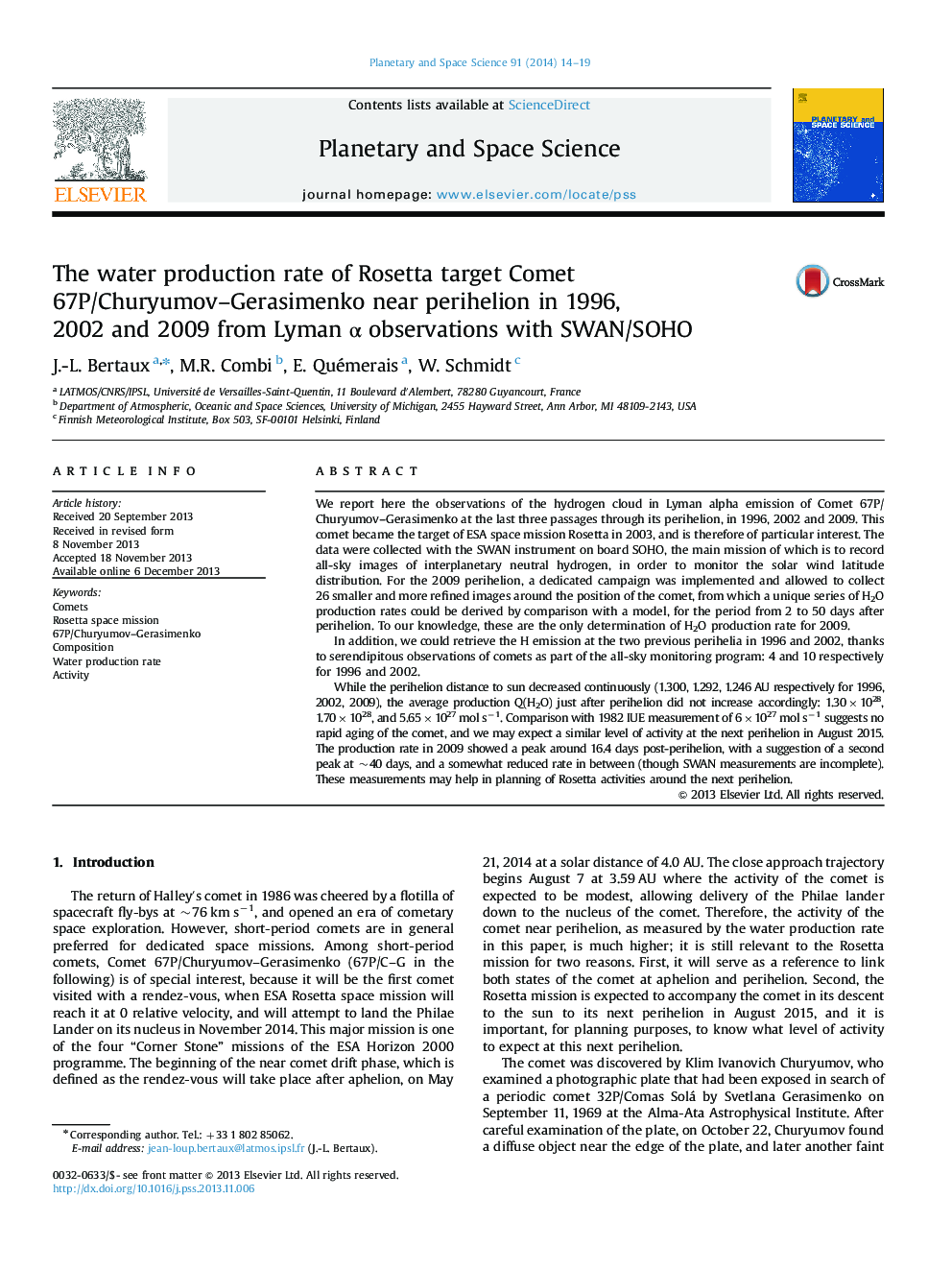| Article ID | Journal | Published Year | Pages | File Type |
|---|---|---|---|---|
| 8143855 | Planetary and Space Science | 2014 | 6 Pages |
Abstract
While the perihelion distance to sun decreased continuously (1.300, 1.292, 1.246 AU respectively for 1996, 2002, 2009), the average production Q(H2O) just after perihelion did not increase accordingly: 1.30Ã1028, 1.70Ã1028, and 5.65Ã1027 mol sâ1. Comparison with 1982 IUE measurement of 6Ã1027 mol sâ1 suggests no rapid aging of the comet, and we may expect a similar level of activity at the next perihelion in August 2015. The production rate in 2009 showed a peak around 16.4 days post-perihelion, with a suggestion of a second peak at ~40 days, and a somewhat reduced rate in between (though SWAN measurements are incomplete). These measurements may help in planning of Rosetta activities around the next perihelion.
Related Topics
Physical Sciences and Engineering
Earth and Planetary Sciences
Geophysics
Authors
J.-L. Bertaux, M.R. Combi, E. Quémerais, W. Schmidt,
